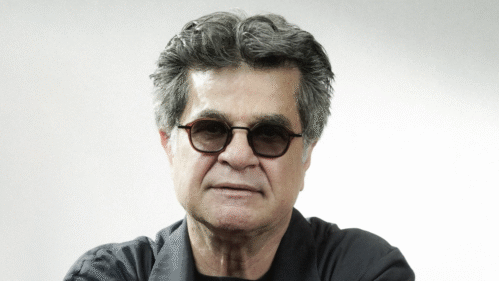TORONTO — There is no entry in the Random House Encyclopedia for “The Little Flower,” but a Catholic hearing the name will immediately recognize it. Therese de Lisieux lived from 1873 to 1897, practiced great humility in her life, and became a saint almost by acclamation. She would probably be astonished that generations of Catholic girls venerate her as fervently as young Catholic boys these days venerate Michael Jordan.
Therese did not aspire to greatness. She believed you could praise the Lord in little ways, by scrubbing floors and pots and pans, and Offering It Up. Because of her devotion and simplicity, the Little Flower is believed to possess a special ability to intercede with Jesus.
I know all of these things because I went to Catholic school when St. Therese was the most popular of all of the saints of the church, excepting Mary, of course. And because I am a product of that time, I sat through the new movie “Household Saints” with a tide of recognition rising within me. The ring of truth
This is not a religious movie. God forbid! Religious movies are widely thought to be death at the box office. But it is a movie about religion, in which the comedy and the truth are about equally effective, and if you attended Catholic schools before Vatican II, you are likely to find yourself whispering to your friends, ” All of this stuff is exactly like it was!”
Others (those vast masses we used to lump together as “non-Catholics”) will no doubt think the film exaggerated. It is not. It is about those decades in America, roughly between the 1950s and the 1980s, when calling someone a “devout Catholic” stopped sounding like praise, and started carrying the suggestion that the person had a problem.
Many years ago, Pauline Kael wrote a piece about the three best American directors of the 1970s – Altman, Scorsese and Coppola – and said what they had in common was pre-Vatican II Catholicism. They were raised with richer imagery: They got the incense, the Latin and the mysticism of the church, she said, while the Protestants were playing golf and voting for Eisenhower.
“Household Saints” (which opened Friday at the Fine Arts) is directed by a woman from a similar background: Nancy Savoca, who is Italian and Argentinian and who knows about piety. Her film chronicles three generations of an ItalianAmerican family in New York’s Little Italy. The Sicilian grandmother comes from a time when religion, superstition and old wives tales all had a constant and powerful presence. The parents grow out of that time and into a modern America of consumerism and middle-class prosperity. It’s symbolic that when the grandmother dies, they repaint her dark and gloomy old apartment in bright pastels.
And then there is their daughter, significantly named Teresa, a sweet and warm-hearted young woman who does not quite catch on with the modern age. She has a special devotion to the Little Flower, and her spirituality makes everyone uneasy, especially her father. (When she says she would like to enter the convent, he explodes: “No daughter of mine is gonna line the Pope’s pockets!”)
“Household Saints” is, in short, about the problems of being a saint in today’s world, when people are going to think you’re a little crazy. The same activities that were praised by priests 50 years ago are now treated by psychiatrists.
I talked with Nancy Savoca this year at the Toronto Film Festival. She is one of the most life-affirming of all current filmmakers; her feature credits are “True Love” (1989) and “Dogfight” (1991). The first movie introduced Annabella Sciorra in the story of a tempestuous romance and marriage in the Bronx, and the second was about a young Korea-bound soldier who dates a plain girl (Lili Taylor) on his last night of shore leave, breaks her heart and realizes too late he may have done some damage to his own. One-of-a-kind film
Now here she is with this wonderful, one-of-a-kind film, again starring Lili Taylor, and with Vincent D'Onofrio and Tracey Ullman as the parents, and New York acting legend Judith Malina as the grandmother. The movie’s godfather and executive producer, who joined in the interview, was Jonathan Demme, whose last feature was the rather different “The Silence of the Lambs.”
But Demme has made a documentary since then, “Cousin Bobby,” about his cousin who is an Episcopal priest in Harlem, and who, in his own stubborn and quixotic way, is also going about becoming a saint in a secular age. So perhaps it is not surprising that when Savoca approached Demme with the novel Household Saints, published in 1981 by Francine Prose, he agreed that it that cried out to be filmed.
“Some people might have questioned who this movie would appeal to,” Savoca said. “I think there’s a martyr in all of us, just waiting to come out. And St. Therese makes it seem possible. Because as Lili’s character says, ‘I didn’t get shot full of arrows. But I can do this. I can scrub, I can wash, I, too, can be a saint. It’s an attainable thing.”
The way you get to be a saint is made so clear to you in Catholic school. If you’re raised that way, it’s the underlying fabric; it’s more real to you than physics or chemistry. It’s grace and sin.
“Yep,” Savoca said. “I was raised that way. Full, full, full. Argentinian-Catholic and Sicilian-Catholic. Those are my backgrounds. My mother ran a very strong Catholic household. My grandmother in Argentina converted people left and right. She would get closer to heaven with each one she converted. Any beggar who came by got food, and instructions to go see the priest. In this country stuff like that seems to come from a long time ago, but when you go to Argentina, it is the 1950s.
But movies in America these days simply don’t deal with religion like that.
“Yeah, but people do care about this stuff,” she said. “I know I do. I read Francine Prose’s novel 10 years ago. And just totally fell in love with it for a million reasons. One of them was my spiritual heritage, which I was in turmoil over. Religion was a serious thing with me and a natural part of my life until I started reading, and meeting people who didn’t come from where I came from. And then I started questioning everything, and I threw everything out, but then nothing fit anymore, and I knew I had to go back and find some things to keep that would make sense to me.”
So filming this story was a way of facing those questions?
“I was really scared. I told myself, it’s such a complicated book, and there’s so much stuff that could be really bad if it’s not done right. So I need a lot of years to find the answers to my questions and then I’ll know what I’m talking about, and I can make the movie.
“Of course what wound up happening is that I didn’t find the answers, and then I realized that’s why I wanted to make the movie: because I didn’t have them, and the story didn’t have them, either. It was just about trying to be religious in an age that doesn’t understand you.”
It’s a good thing, probably, that Savoca waited 10 years, because in the meantime, Lili Taylor came into the picture. You will remember her if you saw “Mystic Pizza” (1988), where she was the heir to the famous sauce recipe, or “Say Anything” (1989), where she performed her deeply earnest and therefore very funny folk songs, or the overlooked “Bright Angel” (1991), where she was a runaway teenager, or “Dogfight.”
“I told Lili while we were making ‘Dogfight’ that there was this book I wanted to film,” Savoca said, “and she was definitely Teresa. But making the book seemed harder and harder, and that’s when we said to Jonathan Demme, ‘Help us out, because we’re in the middle of this thing, and it ain’t moving and I’m pregnant and what am I doing’?”
Demme was willing. He had invested earlier in Savoca’s “True Love” and admired the movie a lot, and “we’re neighbors now. We talk a lot about movies and as this project started, I got kinda pulled in as one of the producing team.”
The clout of a major director like Demme usually helps smaller movies get made. Still, “we went everywhere and got rejected,” Savoca said, “and I knew that if it fell through, there was never going to be another time.”
Some people would have advised you to start with the story of the Lili Taylor character. But she only enters the movie in the last 45 minutes or so. There’s all the earlier story, about how her parents met because her father won the hand of her mother in a card game, and how they changed, and grew more “modern.”
Savoca smiled. “The beauty of this book was that you never knew what was going to happen next. Here are these people, and you don’t know why you’re reading about them, but you love them. Then you look back and everything just falls into place. You realize that if hadn’t been hot, her future husband wouldn’t have been playing pinochle, and he wouldn’t have gotten drunk and he and Lili’s father wouldn’t have gambled over whether he could marry her, and each little piece fell together just like life.”
It’s gotta be more than fate, I said. She nodded. Here we were, two Catholics on familiar ground.
“You go. . . . I don’t know, is there a plan? Is it coincidence? There’s a reason why this stuff happens. But trying to make sense of the reason is what life is all about. So that was the beauty of the thing. That for Teresa, everything was part of God’s plan. The movie is about the deep dark ancient religion, where we all come from, and then America, the bright and clean. They treat that house the way we treat religion: Paint the room over, get rid of the old junk, throw it in the garbage, I don’t need it, I want to move on and be progressive, we don’t need history!”
By the end of the film, Teresa receives a visit from Jesus, and has lost touch with what her parents think of as a normal life. Do you, I asked, think she goes mad?
Savoca shrugged a little sadly.
“By definition, a saint is someone who looks for God. And that’s what she does. But she becomes so internal, she leaves out the external world. Maybe that’s mental illness. If she were analyzed, maybe they’d put them on Prozac or something. But that’s part of the deal if you’re looking for God. So I think you have to have it both ways.”











